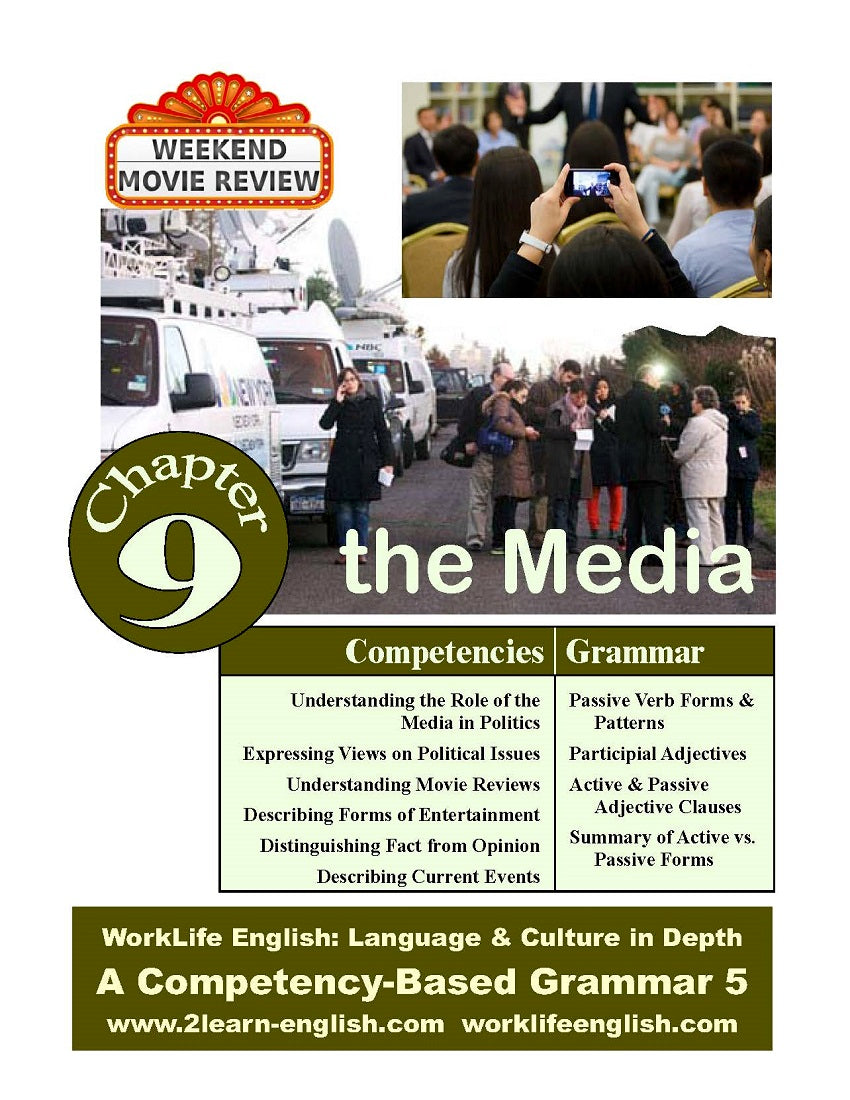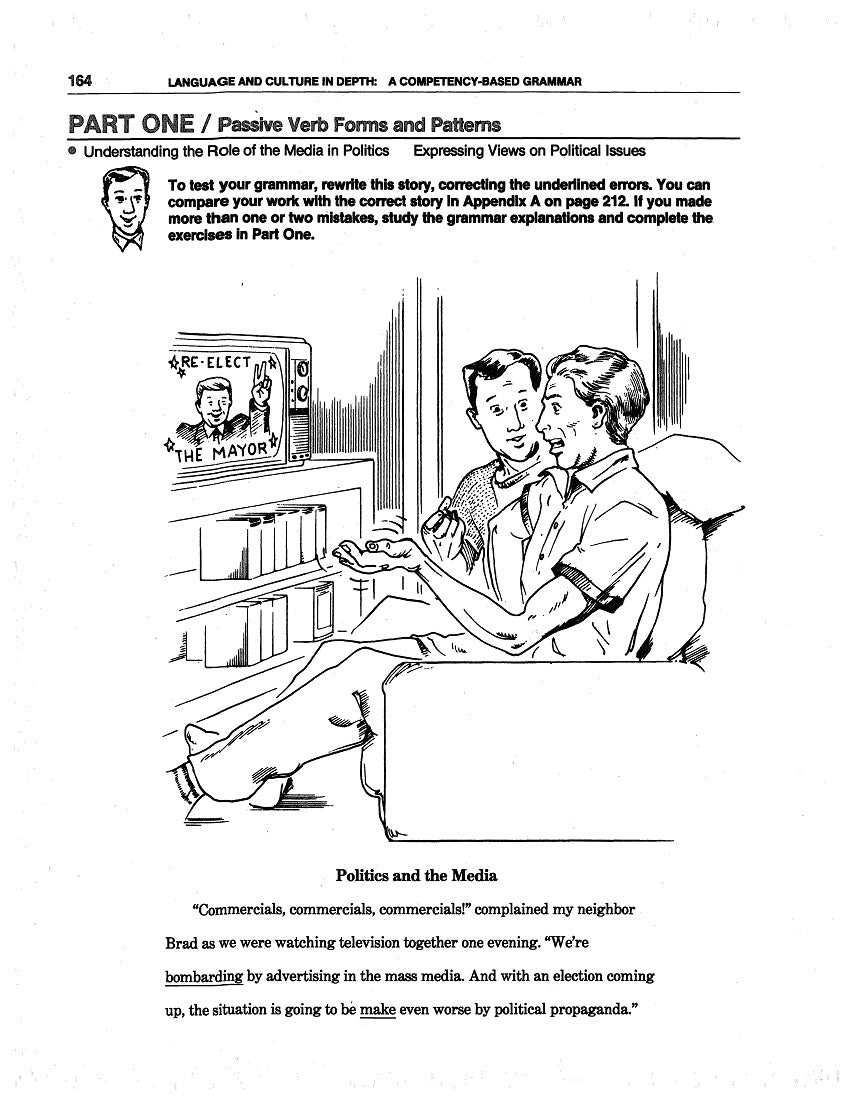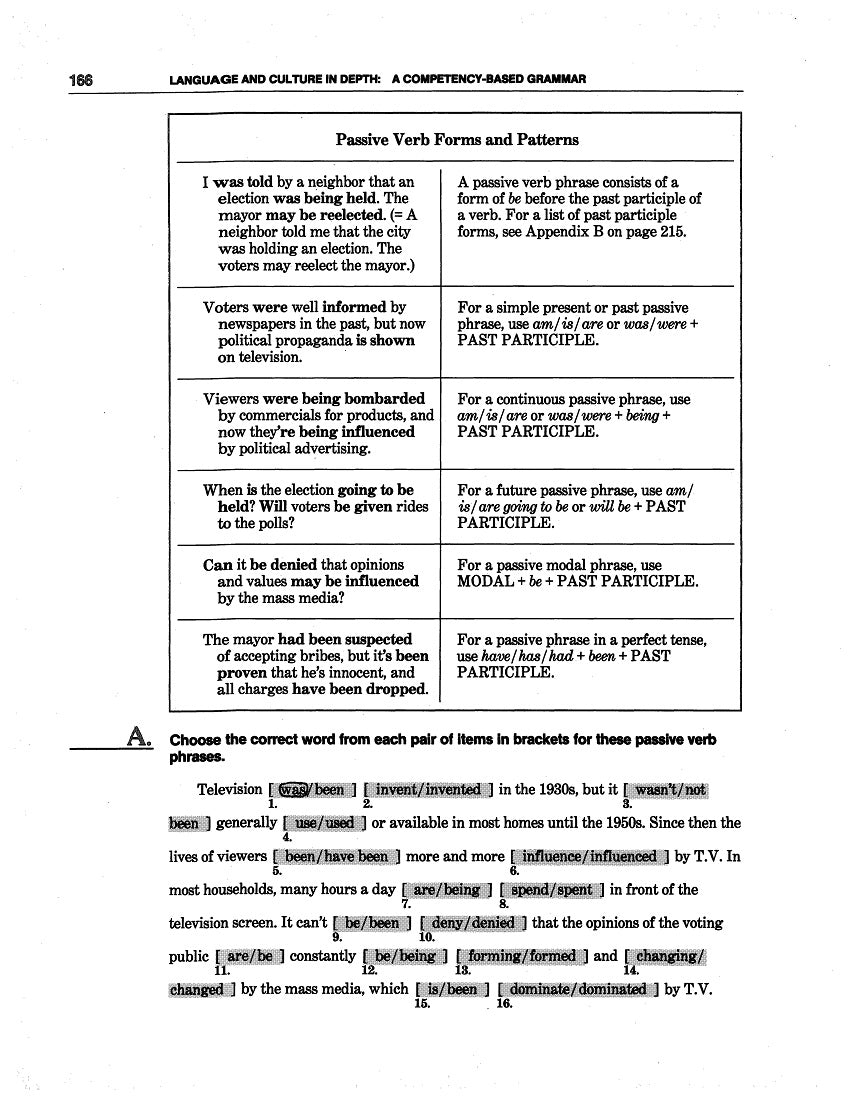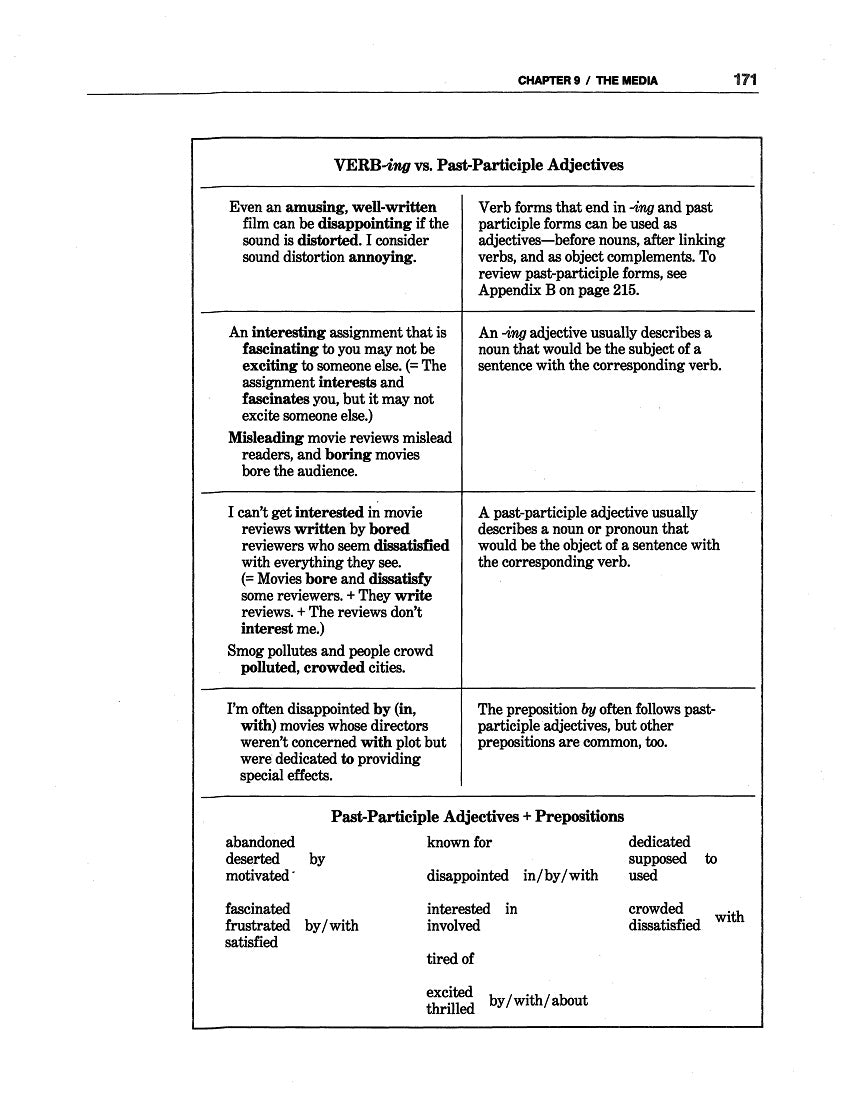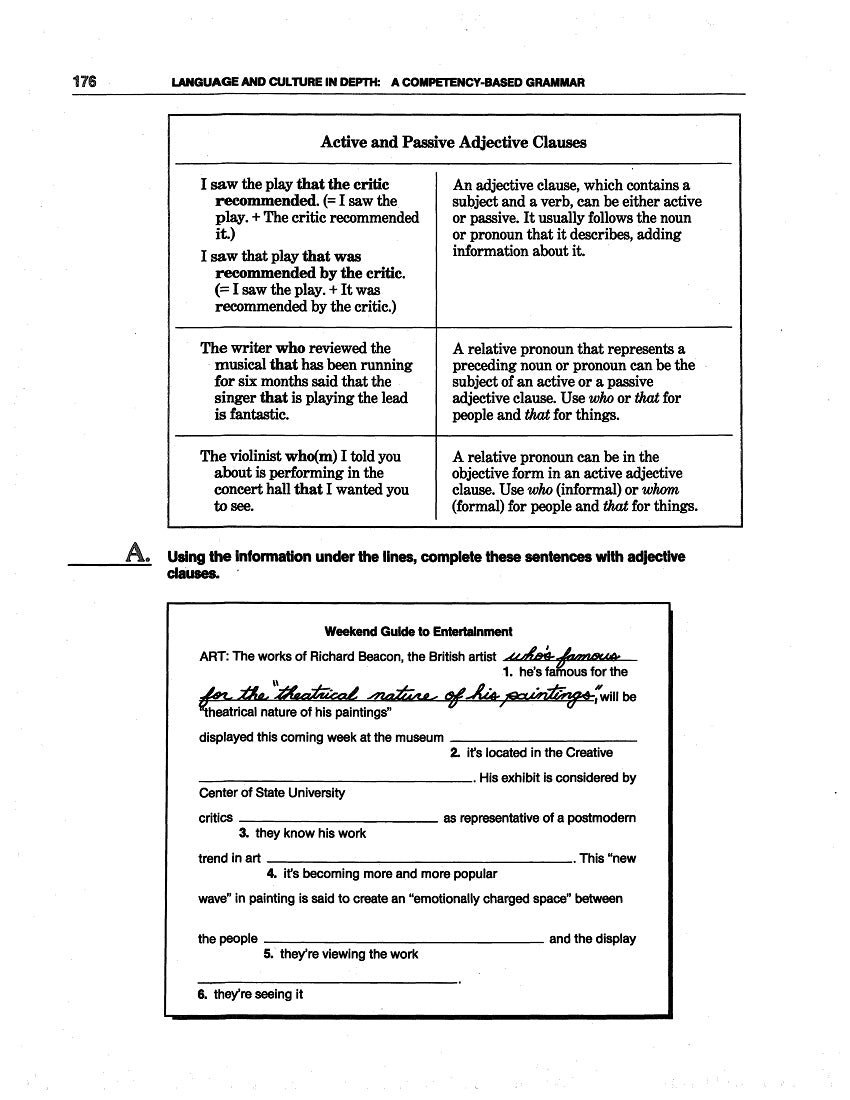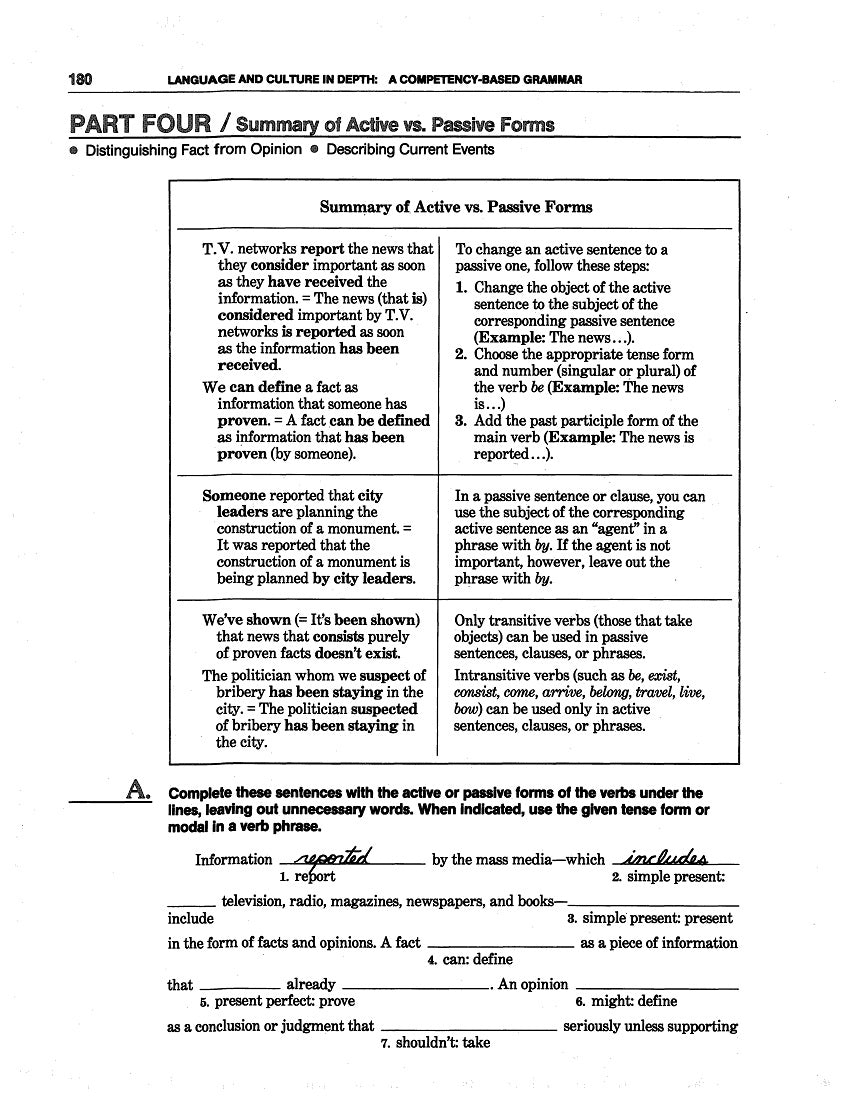1
/
of
6
Work/Life English
D-14.02 Passive vs. Active Verbs in Sentences, as Participial Adjectives, in Adjective Clauses
D-14.02 Passive vs. Active Verbs in Sentences, as Participial Adjectives, in Adjective Clauses
Regular price
$5.00 USD
Regular price
Sale price
$5.00 USD
Unit price
/
per
Parts One to Four of Chapter 9: the Passive Voice (“the Media”) of WorkLife English Grammar 5: Language & Culture in Depth, pages 163-182
20 pages
Who It’s For: Teachers, Helpers, & Intermediate to Advanced English-Language Learners Ready to Compare Forms, Patterns, & Uses of the Active vs. Passive Voices
Why It’s Useful: In English grammar, verbs have five attributes: Person, Number, Tense + Aspect; Voice; Mood. The first three of these are taught / learned in Basic through Intermediate Lessons; the last, Mood, is nearly always Imperative or Indicative—until the Subjunctive comes up in (much) more advanced instruction on recommendations, demands, hypotheticals, or the like. The fourth aspect, Voice, involves only two choices: Active, in which the Sentence Subject “performs the action of the verb,” and Passive, in which the Subject is “acted upon.” As soon as language learners begin communicating in (formal) writing while cultivating their style, they’re likely to need or appreciate learning how to use “the Passive.” This Download will provide a good start.
What You’ll Do:
[1] In the page 163 Chapter Opener, imagine how its visuals might evoke Passive-Voice Verb, Adjective, & Clause Phrasing; its Competencies & Grammar listings give clues.
[2] In Part One on pages 164-168, test your knowledge of “Passive Verb Forms & Patterns” by correcting errors in the Story “Politics & the Media.” To check your rewrite, study the Pedagogy and do Exercises A-*C + F. When you think you’ve “got it,” use passive forms when they serve a purpose (in *D-*E) to express your views on “the Role of the Media in Politics” or other issues in advertising and publicity.
[3] In Part Two on pages 169-173, get / utilize what you need with regard to Verb-ing vs. Past-Participle Adjectives.” Begin by fixing a tale called “A Movie Review.” Continue using (participial) descriptors to edit / create more eloquent reactions to films.
[4] Part Three on pages 174-179 covers possibly “new grammar”—”Active vs. Passive Adjective Clauses.” It includes “reduced” and “restrictive” (essential) vs. “non-restrictive” sentence elements. Follow its steps to enhance your ability to “Describe Forms of Entertainment.”
[5] Review and improve what you’ve learned in a Part Four Summary of Active vs. Passive Forms on pages 180-182. It will help you in “Distinguishing Fact from Opinion” and “Describing Current Events.”
Couldn't load pickup availability
